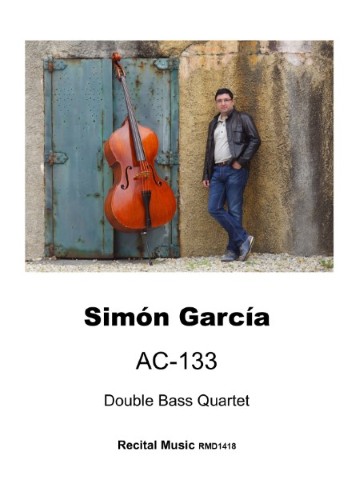Your basket is currently empty!
Quartet Suite Op.26

Description
Findeisen’s Quartet Suite Op.26 was probably composed in 1933/34 and is aimed at the advanced quartet. In four contrasting movements, the composer uses two tunings – …solo tuning for basses 1 & 2 and orchestral for basses 3 & 4 – exploiting the entire range of the double bass. Findeisen combined his skills as a bassist and composer to produce four characteristic and characterful movements, described by Klaus Stoll as ‘in the tradition of Max Reger’, which are inventive and beautifully written. The spacing between the players ensures a clarity and openness, which isn’t always the case with bass quartets. Bass 1 plays in high treble clef throughout, bass 4 remains in bass clef, acting as the foundation of the group, and basses 2 and 3 are somewhere between the two. The first movement (Adagio), in C major, is Chorale-like and slow moving, and a slightly more animated middle section contrasts the stillness and stately outer sections. A Menuett & Trio follow (A major/D major) with a syncopated Viennese waltz theme divided between all four players. The lyrical and effective dance-style is succeeded by a more robust and Germanic trio which partners basses 1 and 2 with basses 3 and 4. The third movement (Andante moderato) is a chromatically inspired ‘song without words’ with much contrapuntal interplay between all four players. A range of moods are explored and there is something of interest for each bass. The movement begins and ends in C major, but Findeisen subtly and successfully sidesteps through many modulations and tonalities to maintain the interest. The last movement, subtitled Humoreske (Allegro), is lively and rhythmic with a strong momentum and drive. The final section, marked Presto (wild), is fast and frenetic pushing the piece to a dramatic, exciting and successful conclusion. Findeisen certainly knew how to write for multiple basses and there are musical and technical challenges throughout – but this is certainly not for the faint-hearted or timid quartet. Basses 1 and 2 play exclusively in treble clef and require players who are confident and experienced in the higher solo register. Bass 3 tends to drift between bass and treble clefs, with a few harmonics thrown in for good measure, but is primarily in bass clef, and bass 4 is the ‘engine room’ of the quartet and remains in bass clef throughout and descends to low C. The low notes can be transposed an octave higher if necessary. Without access to the original manuscript, this edition is based on the first publication from 1934. There were many discrepancies between the printed score and parts and the editor has aimed to create a new playable edition which hopefully reflects the composer’s intentions.
R.R.P £12.5
Our Price £10.63
Shipping Costs: No shipping




